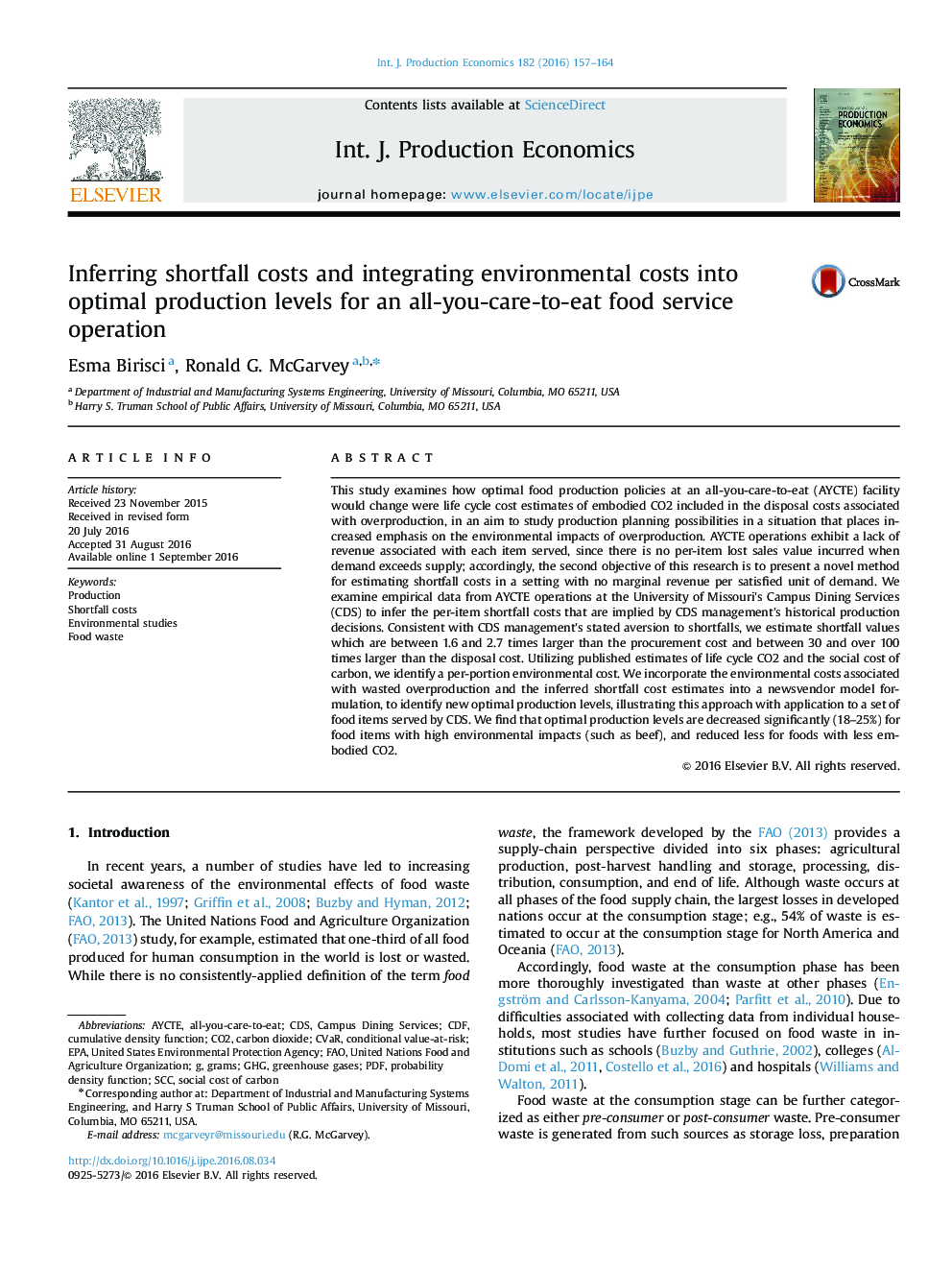| کد مقاله | کد نشریه | سال انتشار | مقاله انگلیسی | نسخه تمام متن |
|---|---|---|---|---|
| 5079214 | 1477524 | 2016 | 8 صفحه PDF | دانلود رایگان |
عنوان انگلیسی مقاله ISI
Inferring shortfall costs and integrating environmental costs into optimal production levels for an all-you-care-to-eat food service operation
ترجمه فارسی عنوان
کاهش هزینه های ادغام و ادغام هزینه های زیست محیطی به سطوح تولید بهینه برای سرویس های غذایی مورد نیاز برای غذا
دانلود مقاله + سفارش ترجمه
دانلود مقاله ISI انگلیسی
رایگان برای ایرانیان
کلمات کلیدی
SCCEPACDFGHGCVaRUnited States Environmental Protection Agency - آژانس حفاظت از محیط زیست ایالات متحدهProbability density function - تابع چگالی احتمالcumulative density function - تابع چگالی تجمعیProduction - تولیدCarbon dioxide - دیاکسید کربنFood waste - زباله های مواد غذاییFAO - فائوConditional Value-at-Risk - مشروط به ارزش در معرض خطرEnvironmental studies - مطالعات محیطیSocial cost of carbon - هزینه اجتماعی کربنPdf - پی دی افCdS - کادمیم سولفید، سولفید کادمیمCO2 - کربن دیاکسیدGreenhouse gases - گازهای گلخانه ایgrams - گرم
موضوعات مرتبط
مهندسی و علوم پایه
سایر رشته های مهندسی
مهندسی صنعتی و تولید
چکیده انگلیسی
This study examines how optimal food production policies at an all-you-care-to-eat (AYCTE) facility would change were life cycle cost estimates of embodied CO2 included in the disposal costs associated with overproduction, in an aim to study production planning possibilities in a situation that places increased emphasis on the environmental impacts of overproduction. AYCTE operations exhibit a lack of revenue associated with each item served, since there is no per-item lost sales value incurred when demand exceeds supply; accordingly, the second objective of this research is to present a novel method for estimating shortfall costs in a setting with no marginal revenue per satisfied unit of demand. We examine empirical data from AYCTE operations at the University of Missouri's Campus Dining Services (CDS) to infer the per-item shortfall costs that are implied by CDS management's historical production decisions. Consistent with CDS management's stated aversion to shortfalls, we estimate shortfall values which are between 1.6 and 2.7 times larger than the procurement cost and between 30 and over 100 times larger than the disposal cost. Utilizing published estimates of life cycle CO2 and the social cost of carbon, we identify a per-portion environmental cost. We incorporate the environmental costs associated with wasted overproduction and the inferred shortfall cost estimates into a newsvendor model formulation, to identify new optimal production levels, illustrating this approach with application to a set of food items served by CDS. We find that optimal production levels are decreased significantly (18-25%) for food items with high environmental impacts (such as beef), and reduced less for foods with less embodied CO2.
ناشر
Database: Elsevier - ScienceDirect (ساینس دایرکت)
Journal: International Journal of Production Economics - Volume 182, December 2016, Pages 157-164
Journal: International Journal of Production Economics - Volume 182, December 2016, Pages 157-164
نویسندگان
Esma Birisci, Ronald G. McGarvey,
